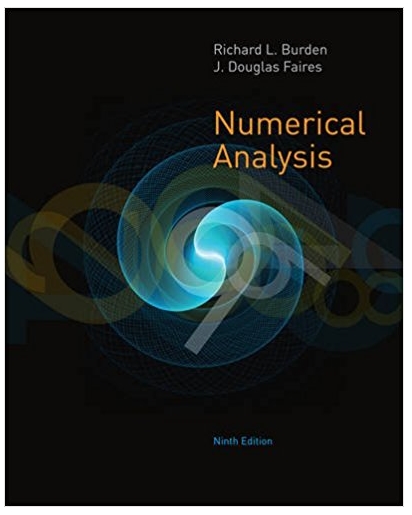Suppose m linear systems Ax (p) = b (p) , p = 1, 2, . . .
Question:
Suppose m linear systems Ax(p) = b(p), p = 1, 2, . . . ,m, Are to be solved, each with the n × n coefficient matrix A
a. Show that Gaussian elimination with backward substitution applied to the augmented matrix [A : b(1)b(2) · · · b(m)]
Requires
1/3 n3 + mn2 – 1/3 n multiplications/ divisions And 1/3 n3 + mn2 – 1/2 n2 − mn + 1/6 n additions/subtractions
b. Show that the Gauss-Jordan method (see Exercise 12, Section 6.1) applied to the augmented matrix [A : b(1)b(2) · · · b(m)]
Requires
1/2 n3 + mn2 – 1/2 n multiplications/divisions And 1/2 n3 + (m − 1)n2 + (1/2− m) n additions/subtractions.
c. For the special case

For each p = 1, . . . ,m, with m = n, the solution x(p) is the pth column of A−1. Show that Gaussian elimination with backward substitution requires 4/3 n3 – 1/3 n multiplications/divisions and 4/3 n3 – 3/2 n2 + 1/6 n additions/subtractions for this application, and that the Gauss-Jordan method requires 3/2 n3 – 1/2 n multiplications/divisions and 3/2 n3 − 2n2 + 1/2 n additions/subtractions.
d. Construct an algorithm using Gaussian elimination to find A−1, but do not per- form multiplications when one of the multipliers is known to be 1, and do not per- form additions / subtractions when one of the elements involved is known to be 0. Show that the required computations are reduced to n3 multiplications/divisions and n3 − 2n2 + n additions/subtractions.
e. Show that solving the linear system Ax = b, when A−1 is known, still requires n2 multiplications/divisions and n2 − n additions/subtractions.
f. Show that solving m linear systems Ax(p) = b(p), for p = 1, 2, . . . ,m, by the method x(p) = A−1b(p) requires mn2 multiplications and m(n2 − n) additions, if A−1 is known.
Step by Step Answer:






